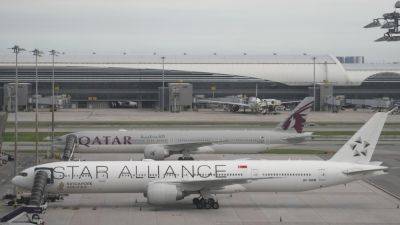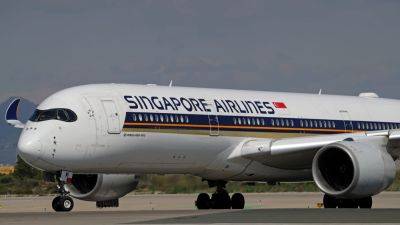Turbulence-hit Singapore Airlines flight fell 54 meters in less than five seconds, investigation finds
The Singapore Airlines flight that encountered severe turbulence on its way from London to Singapore dropped 54 meters (178 feet) in less than five seconds, preliminary findings released Wednesday showed.
The Transport Safety Investigation Bureau of Singapore said the sharp altitude drop as well as changes to gravitational forces likely caused the injuries. One person died of a suspected heart attack, and many of the 211 passengers and 18 crew members onboard were injured in the incident on May 21.
"The rapid changes in G [gravitational force] over the 4.6 sec duration resulted in an altitude drop of 178 ft, from 37,362 ft to 37,184 ft. This sequence of events likely caused the injuries to the crew and passengers," the report said Wednesday.
The changes in gravitational forces "likely resulted in the occupants who were not belted up to become airborne," the report said. They then almost immediately fell back down as vertical acceleration turned negative, it added.
Pilots engaged controls in an attempt to stabilize the aircraft while gravitational forces were fluctuating, according to the report, which is based on flight data recorder and cockpit voice recorder data. It also said that seat belt-fastening signals were switched on as the incident unfolded.
Following the incident on flight SQ321, the flight diverted to Bangkok's Suvarnabhumi Airport, where it was received by medical services.
At the time of the incident, the aircraft was over Myanmar, "likely flying over an area of developing convective activity," according to the report. Convective activity is linked to temperature shifts in the air, which can cause currents that lead to turbulence.
Turbulence-related incidents are the most common type of accident commercial







